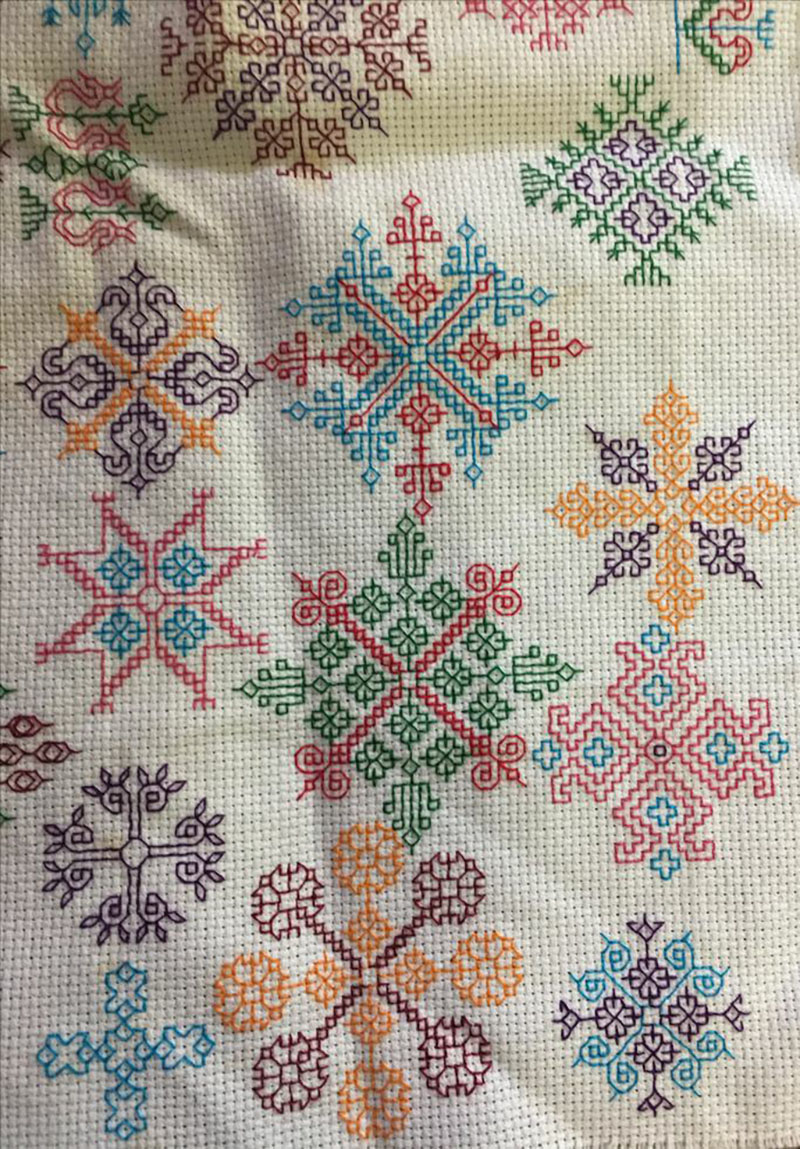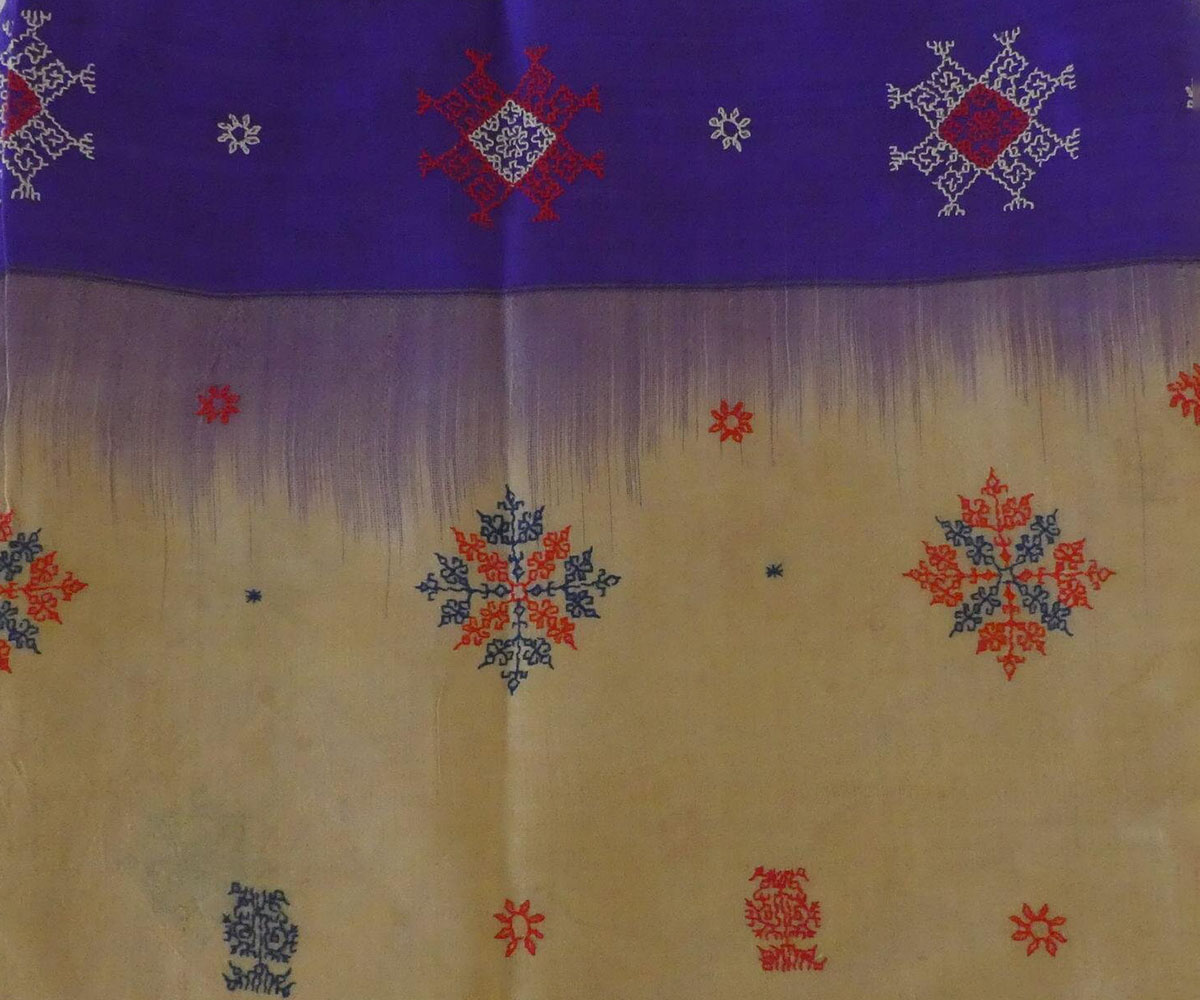An embroidery tradition from Karnataka that dates back to the fifteenth century and is typically applied on sarees and cholis is known as kasuti embroidery. Originally, handwoven clothing was embroidered with kasuti and worn by the women of the Lingayat community, a Shaivite sect that was founded in the twelfth century. Chandrakali sarees with kasuti were a traditional bridal garment and blouses decorated with the embroidery were often presented as gifts to new mothers. Today, most often ilkal sarees embroidered with kasuti are worn by women of all communities in Karnataka and southern Maharashtra, usually during special occasions.
Kasuti is a counting thread embroidery in which the stitches of the design are measured in terms of the number of base fabric threads in the area to be embroidered, making for very precise and deliberate patterns in vertical, horizontal and diagonal stitches. The four main stitches used in kasuti are menthi, a cross stitch used for filler patterns; gavanti, a double running stitch where the second stitch is applied in the spaces skipped by the first; murgi, a zigzag stitch similar to gavanti but arranged in alternating diagonal steps instead of a straight line; and negi, a darning stitch of varying lengths. Motifs rendered with the gavanti and murgi stitches are visible on either side of the cloth but those made with menthi and negi are not.
In pre-Independent Mysore (now in Karnataka), kasuti was done with a silk thread, but today commercially available cotton thread is used and valued for the fastness of its dyes. When applied to sarees, kasuti embroidery is placed prominently along the border of the pallu, and reduces in size towards the pleated section of the saree. In more elaborate cases, embroidered motifs may not be repeated exactly, making for dozens of unique symbols and variations along the saree’s length. These motifs largely consist of Shaivite imagery, reflecting the Lingayat community’s faith: the vahanas (steeds) of various deities such as peacocks and bulls, temple design elements such as gopurams and lingams, chariots, conch shells, snakes, elephants, lotuses, jasmines and marigolds.








